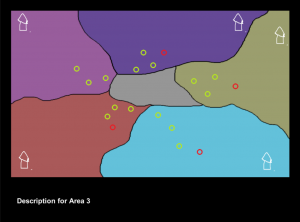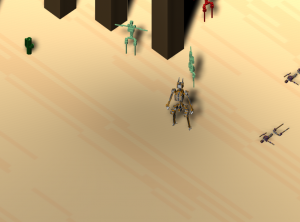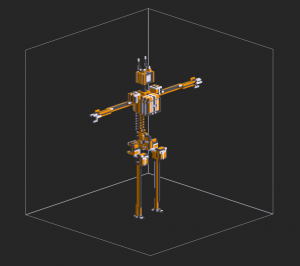Hi,
We had our quarters presentations this week on Monday and we were able to show the faculty what we were working and what we had decided to build as part of the final deliverable. We received some very usefulfeedback from a lot of the faculty and that made us reconsider a lot of the things that we were doing. Some of the feedback that we got was that the action the player was doing in playing the game and participating in the competition was in no way related to the fiction that we were creating for them. Also, we were targeting the wrong demographic. The students who already had some experience participating in computer security competitions and CTFs would have little to no motivation to play our game and we were advised to focus our efforts on students with little to no experience on what computer security actually is.
On Tuesday, Ramya, our programmer visited our clients on main campus and got access to the questions and the games from the previous years. We spent the evening analysing whatthe games did right and what they did wrong. We found out the layout of the questions in the 2017 picoCTF made it very hard for the players to find the easy questions and made it very easy for them to get stuck on the harder questions. The 2014 game was a very polished product with the competition integrated into the game but it had a very wordy story with a lot of unnecessary dialogues and we found that we wanted to avoid doing that.
On Wednesday, we returned to the drawing board to decide on how we want to approach the game now that we had a new direction. We decided that we would be building some kind of scaffolding that would accompany the game and assist in teaching the high level concepts to the students. The scaffolding would be in the form of small metaphorical puzzles that would teach those relevant concepts to the players.

Figure: An example of what the map of the world would look like.
The programmers then started prototyping a small demo for one of the questions in preparation for the client meeting next week. We also asked the problem development team to help us in the design process by filling out a survey that told us what attracted students to CTFs and what helped retain them. These were important things that helped us approach the game in anew light and come up with solid design pillars that will assist us in taking sound design decisions.

Figure: A demo scene that we are working on to test the scaffolding.
Our Artist, Guangya started work on the models of the players robot and other environment objects that would be required on the game and was able to come up with a few models that will help in the theming of the world.

Figure: First draft of the model of the player’s robot in MagicVoxel
-Rajat
